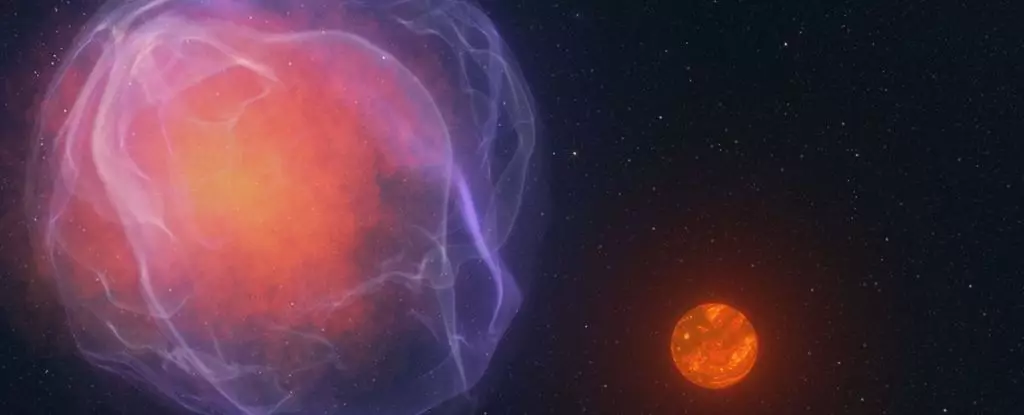The Milky Way, with its vast expanse of stars and cosmic wonders, holds many mysteries waiting to be unraveled. Among these mysteries are hypervelocity stars, rogue objects that defy the norms of orderly orbital patterns and hurtle through space at incredible speeds. These stars, while rare, provide astronomers with unique challenges and opportunities to delve into the workings of the universe. Recently, a fascinating discovery has been made of a hypervelocity star named CWISE J124909+362116.0, shedding light on its origin and trajectory.
CWISE J124909+362116.0, affectionately known as J1249+36, stands out as a remarkable example of a hypervelocity star in the Milky Way. What makes this star particularly interesting is not just its incredible speed of 600 kilometers per second, surpassing the galactic escape velocity, but also its classification as an L subdwarf – a rare, ancient type of tiny main sequence star. This star, one of the oldest in the Milky Way, challenges astronomers with its swift motion and enigmatic origins.
The quest to understand the velocity of J1249+36 has led researchers to explore various theories to explain this stellar enigma. One intriguing explanation is the scenario of a white dwarf binary system. In this setup, a white dwarf star, the remnant core of a Sun-like star, interacts with a companion star, leading to a series of events that culminate in the ejection of the companion star at high speeds. While calculations support this hypothesis, definitive proof of its origin remains elusive due to the passage of time and the dissipation of remnants from a possible supernova explosion.
Another plausible explanation for the hypervelocity of J1249+36 involves many-body interactions within dense stellar environments like globular clusters. These clusters, teeming with millions of stars and potentially harboring black hole binary pairs, can propel stars outward through complex gravitational interactions. While this theory holds merit, efforts to trace J1249+36’s trajectory back to a specific globular cluster have thus far proven inconclusive.
Alternatively, the hypothesis that J1249+36 originated from a satellite dwarf galaxy orbiting the Milky Way offers a compelling narrative. Previous studies have suggested an extragalactic origin for hypervelocity stars, and calculations indicate the feasibility of this scenario for J1249+36 as well. By examining the chemical composition of the star in greater detail, researchers hope to uncover clues that may confirm or refute these hypotheses.
The discovery of J1249+36 and its exceptional characteristics open new avenues for exploring the mysteries of hypervelocity stars in the Milky Way. By delving into the star’s chemical makeup, astronomers aim to piece together its origin story and unravel the cosmic forces that shaped its trajectory. Whether J1249+36 emerged from a white dwarf binary system, experienced a tumultuous ejection from a globular cluster, or ventured from a distant satellite galaxy, the answers lie within the stars themselves.
The enigmatic nature of hypervelocity stars like J1249+36 showcases the boundless wonders of the universe and the relentless pursuit of knowledge that drives astronomers to uncover its secrets. As we gaze into the depths of space and observe these celestial marvels, we are reminded of the infinite possibilities that await discovery in the cosmic tapestry of the Milky Way and beyond.


Leave a Reply